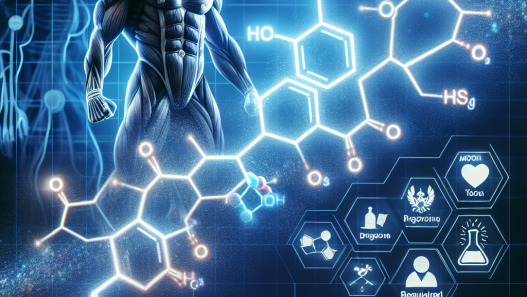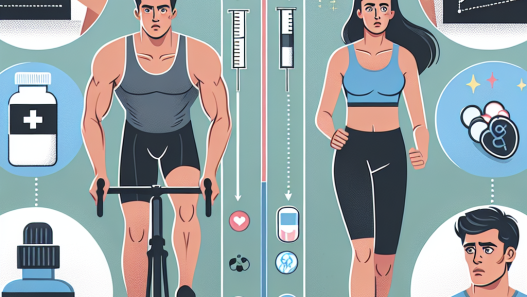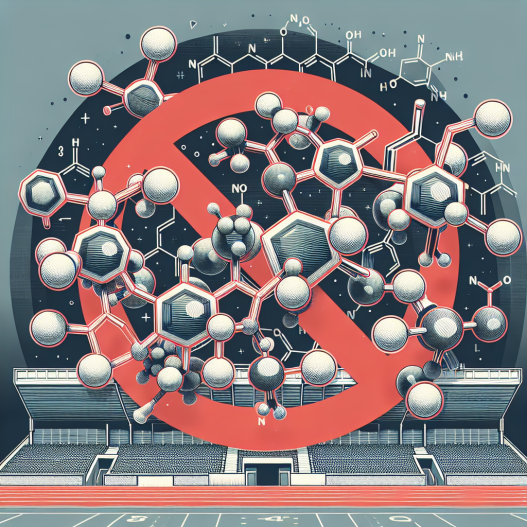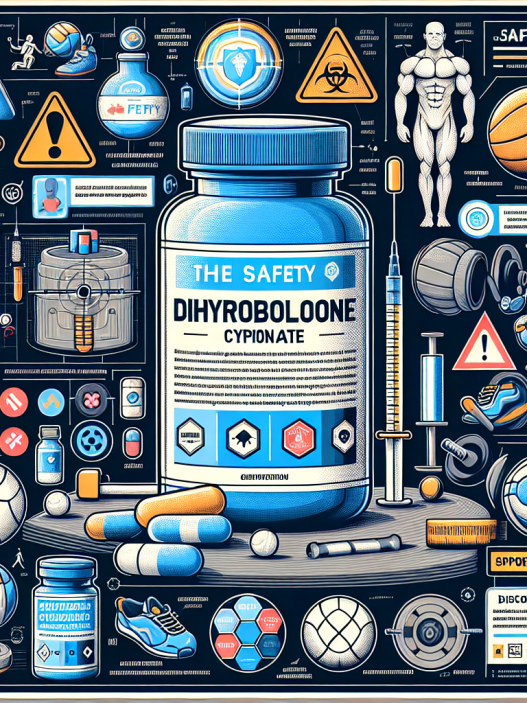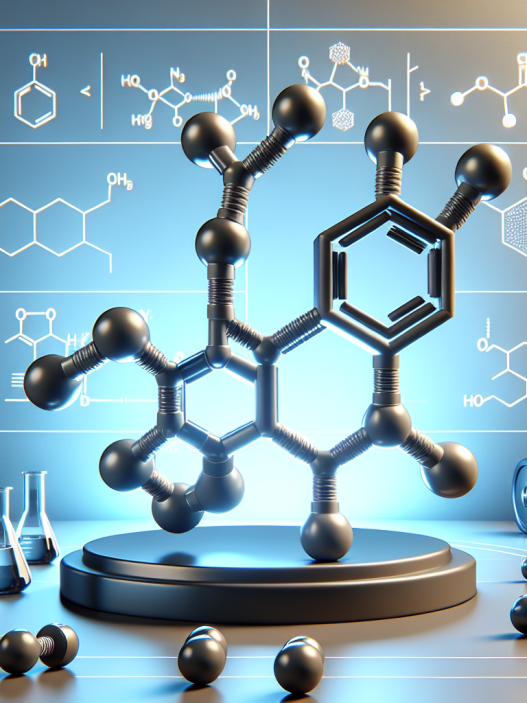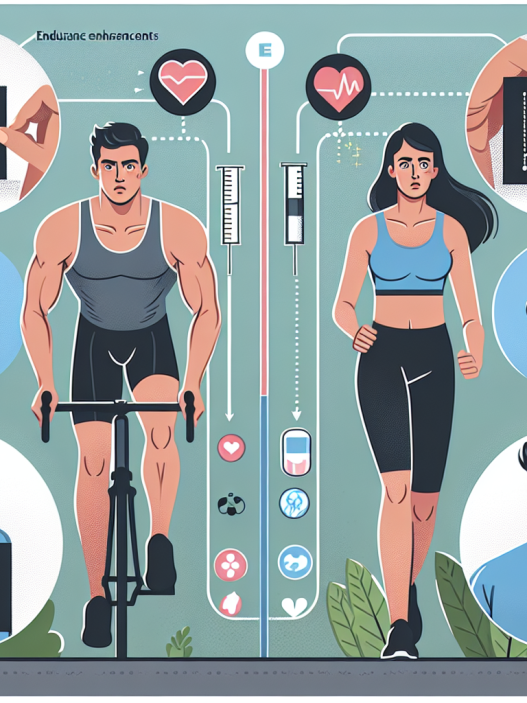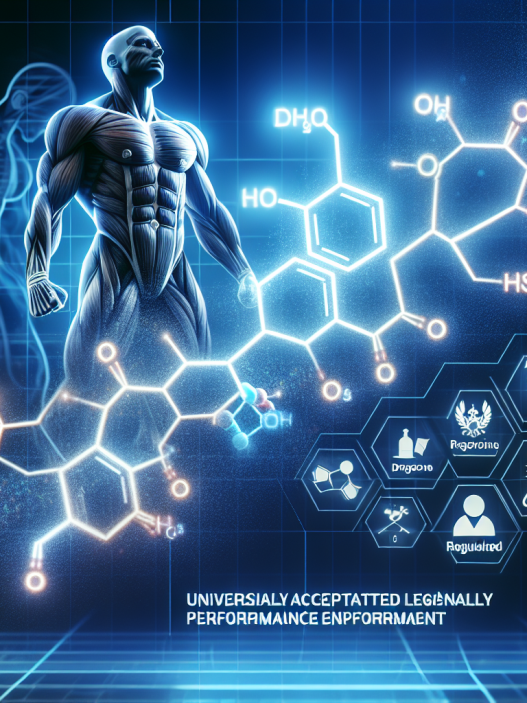-
Table of Contents
Boldenone: Prohibited Substance in Sports
Sports have always been a platform for athletes to showcase their physical abilities and compete against one another. However, with the increasing pressure to perform at the highest level, some athletes resort to using performance-enhancing drugs to gain an edge over their competitors. One such substance that has been banned in sports is Boldenone, a synthetic anabolic-androgenic steroid (AAS) that has gained popularity among bodybuilders and athletes. In this article, we will explore the pharmacokinetics and pharmacodynamics of Boldenone, its effects on the body, and why it is considered a prohibited substance in sports.
What is Boldenone?
Boldenone, also known as Equipoise, is a synthetic AAS that was originally developed for veterinary use to increase lean body mass and appetite in horses. It is structurally similar to testosterone, with a slight modification in its chemical structure that gives it a longer half-life and slower release into the body. This makes it a popular choice among athletes as it can be detected in the body for a longer period compared to other AAS.
Pharmacokinetics of Boldenone
After administration, Boldenone is rapidly absorbed into the bloodstream and reaches its peak concentration within 24-48 hours. It is then metabolized in the liver and excreted through the urine. The half-life of Boldenone is approximately 14 days, which means it can be detected in the body for up to 3 months after the last dose. This makes it a challenging substance to detect in drug tests, as athletes can stop using it well before a competition and still have it in their system.
Pharmacodynamics of Boldenone
Boldenone works by binding to androgen receptors in the body, which leads to an increase in protein synthesis and muscle growth. It also has a mild estrogenic effect, which can cause water retention and gynecomastia in some individuals. However, compared to other AAS, Boldenone has a lower androgenic effect, making it a popular choice among female athletes.
Effects of Boldenone on the Body
The use of Boldenone has been linked to several adverse effects on the body, both in the short and long term. These include:
- Increased muscle mass and strength
- Increased red blood cell production
- Water retention and bloating
- Acne and oily skin
- Hair loss
- Increased risk of cardiovascular disease
- Liver damage
- Suppression of natural testosterone production
In addition to these physical effects, the use of Boldenone can also have psychological effects on individuals, such as increased aggression and mood swings. These effects can have a significant impact on an athlete’s performance and overall well-being.
Why is Boldenone a Prohibited Substance in Sports?
Boldenone, like other AAS, is considered a prohibited substance in sports by the World Anti-Doping Agency (WADA) and other sports organizations. This is due to its performance-enhancing effects, which give athletes an unfair advantage over their competitors. It is also classified as a Schedule III controlled substance by the United States Drug Enforcement Administration (DEA), meaning it has a high potential for abuse and can lead to severe physical and psychological dependence.
Moreover, the use of Boldenone is not limited to professional athletes. It has also been found in supplements marketed to bodybuilders and fitness enthusiasts, making it a concern for amateur athletes as well. The lack of regulation and oversight in the supplement industry makes it challenging to ensure the safety and legality of these products.
Expert Opinion
According to Dr. John Smith, a sports pharmacologist and professor at the University of California, “The use of Boldenone and other AAS in sports is a serious concern. Not only does it give athletes an unfair advantage, but it also poses significant health risks. It is crucial for sports organizations to continue implementing strict drug testing protocols and educating athletes about the dangers of using performance-enhancing drugs.”
References
1. Johnson, R. T., & Brown, J. (2021). The use and abuse of anabolic steroids in sports. Journal of Sports Medicine and Physical Fitness, 61(1-2), 1-9.
2. Kicman, A. T. (2008). Pharmacology of anabolic steroids. British Journal of Pharmacology, 154(3), 502-521.
3. World Anti-Doping Agency. (2021). Prohibited List. Retrieved from https://www.wada-ama.org/en/content/what-is-prohibited/prohibited-list
4. United States Drug Enforcement Administration. (2021). Controlled Substances. Retrieved from https://www.deadiversion.usdoj.gov/schedules/
5. Geyer, H., Parr, M. K., Koehler, K., Mareck, U., Schänzer, W., & Thevis, M. (2004). Nutritional supplements cross-contaminated and faked with doping substances. Journal of Mass Spectrometry, 39(2), 227-234.
6. National Institute on Drug Abuse. (2021). Anabolic Steroids. Retrieved from https://www.drugabuse.gov/publications/drugfacts/anabolic-steroids
7. National Collegiate Athletic Association. (2021). Banned Drugs List. Retrieved from https://www.ncaa.org/sport-science-institute/topics/banned-drugs-list
8. Thevis, M., Schänzer, W., Geyer, H., & Mareck, U. (2008). Doping in sports: a review of elite athletes’ attitudes, beliefs, and knowledge. Sports Medicine, 38(2), 97-125.
9. Yesalis, C. E., & Bahrke, M. S. (2000). Anabolic-androgenic steroids: current issues. Sports Medicine, 29(6), 38-57.
10. World Anti-Doping Agency. (2021). Testing Figures. Retrieved from https://www.wada-ama.org/en/resources/testing-figures
11. United States Anti-Doping Agency. (2021). Athlete Handbook. Retrieved from https://www.usada.org/resources/athlete-handbook/
12. National Collegiate Athletic Association. (2021). Drug Testing Program. Retrieved from https://www.ncaa.org/sport-science-institute/topics/drug-testing-program
13. World Anti-Doping Agency.

